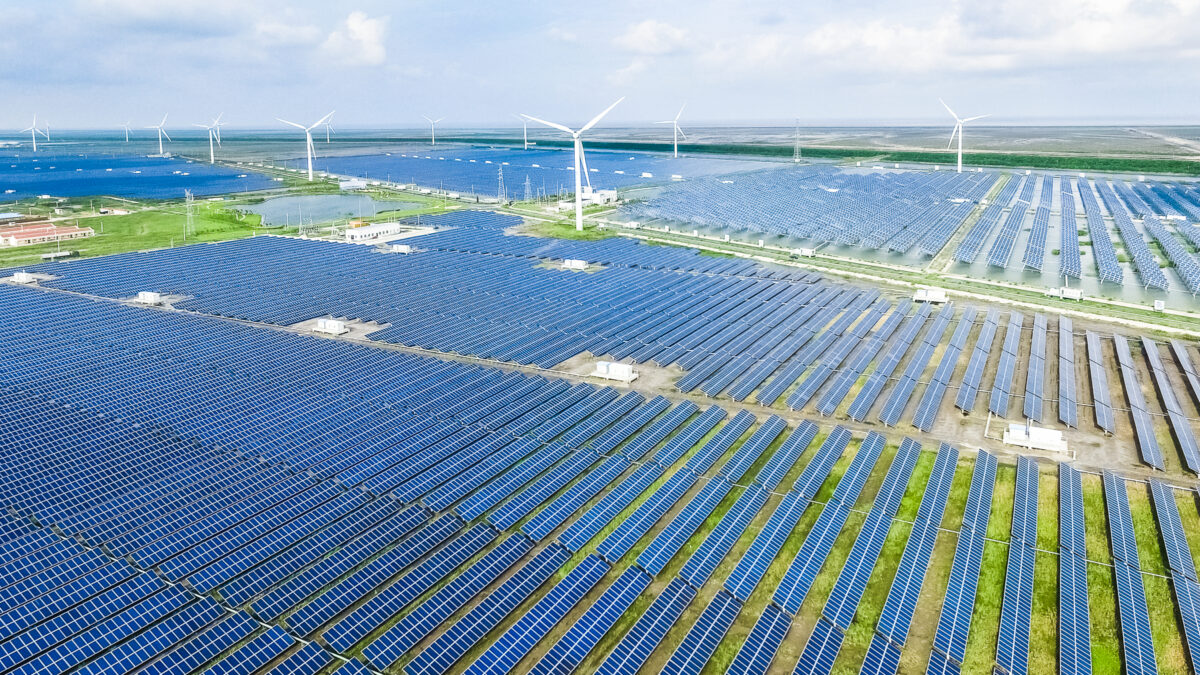Republicans don’t like the Inflation Reduction Act, but it’s popular with investors and the states.
Some investors are worried Donald Trump will repeal the Inflation Reduction Act (IRA) — which funded over $300 billion in clean energy investments across the U.S. last year and has created over 300,000 clean energy jobs as of June 20 — if elected in November, according to experts who spoke at last month’s GreenFin 24 conference.
Trump has expressed his dislike of the act in election speeches and his campaign officials told the Financial Times last year, “We’d be looking to cut a lot of that spending.”
But will a full-scale repeal of codified law truly happen, ending President Joe Biden’s clean energy ambitions?
“It’s the No. 1 question we receive from clients,” said Dave Yaros, U.S. tax sustainability co-leader at Deloitte during a panel at GreenFin.
Both Republican and Democratic states have benefited
The IRA’s 48C Qualifying Advanced Energy Project Credit Program gives companies a tax credit worth 30 percent of any money they spend on green energy projects, decreasing the financial risk of investing in nascent technology such as battery manufacturing.
The legislation has so far funded $391 billion in government spending or tax write-offs.
Private investors contributed $71 billion in investment in Q1 of 2024 alone.
States from across the political spectrum are investing historic amounts of capital, thanks in large part to the available funds from the IRA, according to the Clean Investment Monitor Database. In the past four quarters, Georgia and Tennessee each invested almost $8 billion, followed by Michigan’s nearly $6 billion and Ohio’s nearly $5 billion.
Some IRA credits have a 10-year runway ensuring that applications approved today can’t be rescinded by the next administration.
Similarly, 48 percent of corporate mergers and acquisitions through May 16 in the U.S. power and utility sector involved renewable energy technology, according to PwC. More than $11 billion in investments was primarily driven by provisions in the IRA, PwC says.
The IRA’s 10-year lifespan
Deloitte’s Yaros said that while a Republican administration might attempt to restrict certain tax credits, he still advises his clients to take advantage of the IRA: “I really don’t think anything in the short term can happen.”
Some IRA credits have a 10-year runway ensuring that applications approved today can’t be rescinded by the next administration, according to Dan Saccardi, program director of the company network at Ceres. “Hopefully that provides people with the certainty they need,” he said.
Some executives in the automotive industry are worried that parts of the IRA regarding electric vehicle manufacturing will be modified under a new conservative administration. They worry that Section 30D of the act, which prohibits companies from receiving a $7,500 tax rebate per car if its components were sourced from a “foreign entity of concern,” is particularly vulnerable.
Industry wants to keep it
But ongoing industry support for the IRA may impede radical tampering.
Shell CEO Wael Sawan spoke in favor of preserving the IRA at a June event, saying that the IRA “seems to be working in terms of attracting a significant amount of capital in different states, whether it’s a red or blue state.” Nine of the top 10 districts in the U.S. that received the most amount of clean tech investment are currently represented by Republicans.
Until the 2024 elections are over, investing with the IRA’s clean energy provisions is too lucrative to pass up.
And ultimately, the IRA’s funds are congressionally appropriated, meaning a Republican victory in the White House come November would still require a Republican-led Congress to formally repeal or limit funds.
Until the 2024 elections are over, investing with the IRA’s clean energy provisions is too lucrative to pass up, according to Marshal Salant, head of energy for Citi. Speaking at GreenFin, Salant said that many manufacturing companies and facilities are actively moving from abroad to the U.S. to take advantage of the IRA.
“[The IRA] is working,” Salant said. “People are dramatically increasing the projects they’re working on, jobs are coming back to America.”
This article originally appeared on GreenBiz.com as part of our partnership with GreenBiz Group, a media and events company that accelerates the just transition to a clean economy.


